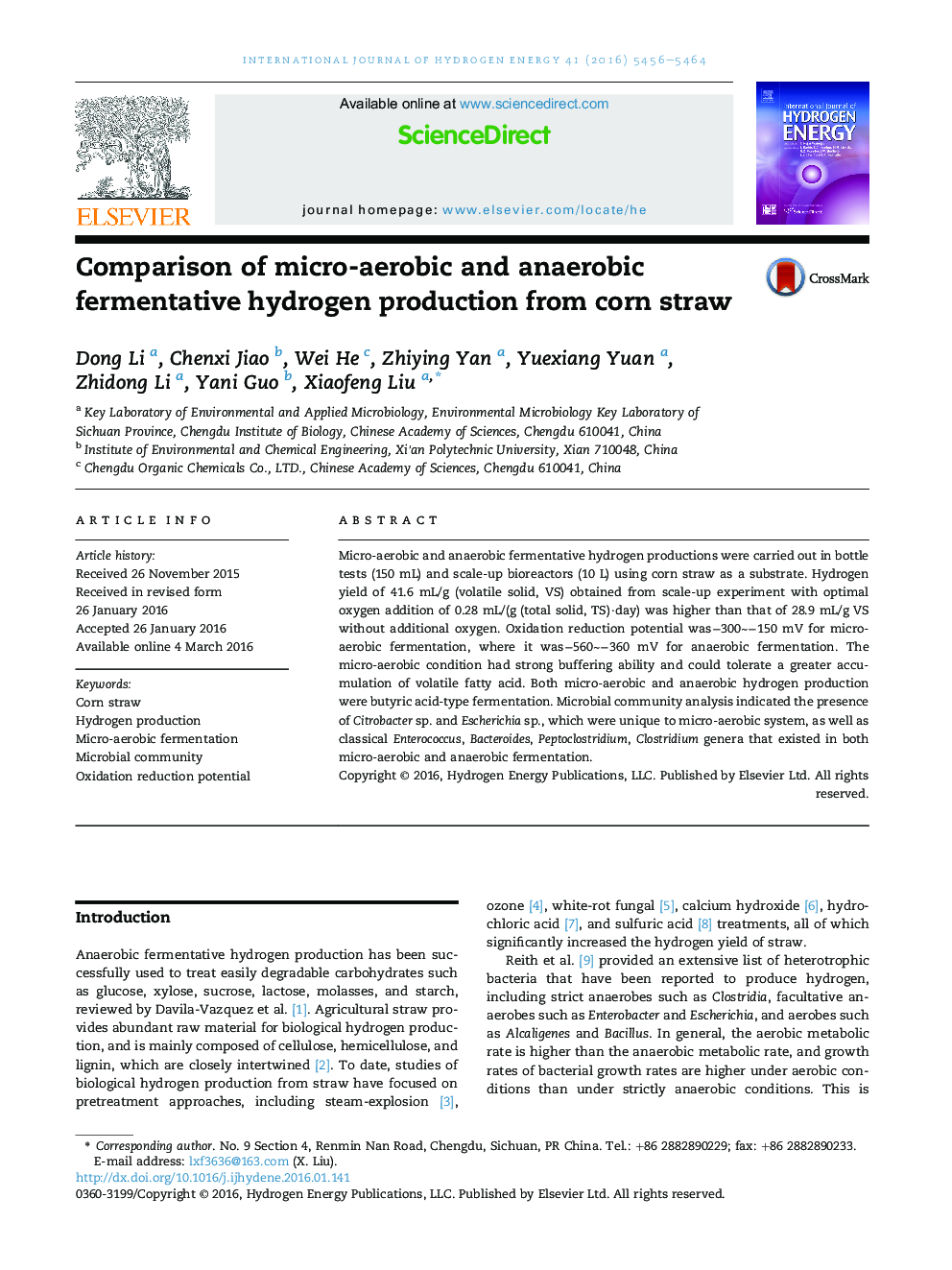| Article ID | Journal | Published Year | Pages | File Type |
|---|---|---|---|---|
| 1268786 | International Journal of Hydrogen Energy | 2016 | 9 Pages |
•Optimal oxygen addition was 0.28 mL/(g TS·day) for corn straw.•Oxidation reduction potential of micro-aerobic fermentation was −300 ∼ −150 mV.•Micro-aerobic hydrogen production was butyric acid-type fermentation.•The micro-aerobic condition had strong buffer ability.•Citrobacter sp. and Escherichia sp. were unique to micro-aerobic system.
Micro-aerobic and anaerobic fermentative hydrogen productions were carried out in bottle tests (150 mL) and scale-up bioreactors (10 L) using corn straw as a substrate. Hydrogen yield of 41.6 mL/g (volatile solid, VS) obtained from scale-up experiment with optimal oxygen addition of 0.28 mL/(g (total solid, TS)·day) was higher than that of 28.9 mL/g VS without additional oxygen. Oxidation reduction potential was−300∼−150 mV for micro-aerobic fermentation, where it was−560∼−360 mV for anaerobic fermentation. The micro-aerobic condition had strong buffering ability and could tolerate a greater accumulation of volatile fatty acid. Both micro-aerobic and anaerobic hydrogen production were butyric acid-type fermentation. Microbial community analysis indicated the presence of Citrobacter sp. and Escherichia sp., which were unique to micro-aerobic system, as well as classical Enterococcus, Bacteroides, Peptoclostridium, Clostridium genera that existed in both micro-aerobic and anaerobic fermentation.
